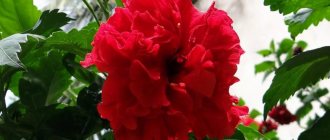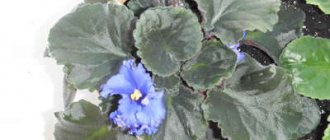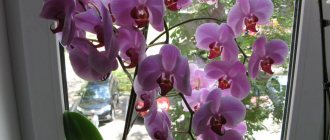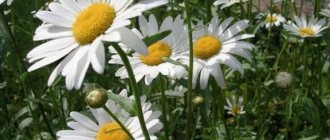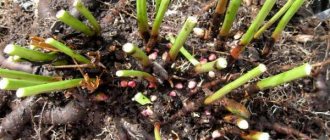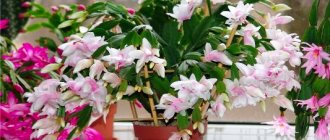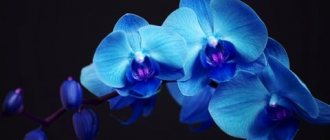Indoor hibiscus - description
Hibiscus belongs to the Malvaceae family. The genus Hibiscus includes about 500 species, varieties and hybrids of this extraordinary plant. Depending on the species, Hibiscus can be a tall tree, shrub or herbaceous plant.
What does it look like
Most indoor Hibiscus are branched shrubs or trees with an elegant trunk and many thin branches. The height of the plant, depending on the type, can vary from 0.5 to 2 m. The crop is perfectly moldable and easily tolerates pruning, thanks to which homemade Hibiscus can be given any shape.
Hibiscus leaves are large, shiny, dark green with jagged edges and a pointed tip. The leaf blades are on long thin petioles and are located alternately along the entire length of the shoots. Most types of Hibiscus have a single color, but there are also variegated varieties, the leaf blades of which are decorated with large and small spots of cream or white color.
When and how often does hibiscus bloom?
Homemade Hibiscus blooms from spring to late summer. Its flowers are arranged singly or collected in small inflorescences. They are funnel-shaped with open and gracefully bent wide petals of various shapes and colors. The base of the petals is fused. The diameter of the flower in different species can reach 20 cm in diameter. The flowers themselves can be simple, with five petals or more. There are double varieties and forms with wavy petals, which gives the flowers a particularly luxurious look. The center of the flower is decorated with a long pistil with many thin stamens.
It is noteworthy that the Hibiscus flower remains fresh only for 24 hours. At the same time, a bush can decorate from 30 to 50 buds, so when one flower blooms in the morning and fades in the evening, it is immediately replaced by another, thanks to which the plant retains its decorative effect for a long time. The color palette of Hibiscus buds is quite extensive and includes red, white, yellow, orange, carmine and pink. Flowers are often decorated with spots and streaks of bright contrasting colors.
After flowering, in place of the bud, a small fruit appears in the form of a seed capsule, which contains many small seeds. After the fruit ripens, it can be removed and the seeds can be used for sowing.
Why is Hibiscus called "Flower of Death"
Despite all the beauty of this plant, the rather ominous name “Flower of Death” has been assigned to Hibiscus. According to some beliefs, widespread in European countries, this plant is a harbinger of imminent death, a terrible illness of the owner or one of the family members. It is believed that if a plant blooms unexpectedly, this is a bad sign, meaning the death of one of the relatives. Therefore, if a plant has not bloomed for a long time and suddenly scatters with many buds, then superstitious owners burn it to avoid misfortune. But if the Hibiscus suddenly dropped all its leaves, then this is associated with the illness of family members.
However, these beliefs are widespread mainly in European countries, and in Asia Hibiscus is loved and respected. Moreover, according to the same superstitions, Hibiscus does not bring misfortunes into the house, but only warns about them, so you should not be afraid, but feel free to go to the store and purchase this beautiful and unpretentious plant. Proper care and compliance with maintenance requirements will help protect the owner from unnecessary worries and maintain a healthy, blooming appearance for the plant.
Homeland of the plant
In nature, Hibiscus can be found mainly in tropical climates in Asia and South America. In the wild, Hibiscus lives in China, Indonesia, Sri Lanka, Brazil, the islands of Fiji, Sumatra and Java. In Malaysia, this plant is considered a national treasure; in Hawaii it is called “the flower of beautiful women.”
Why is hibiscus called the “flower of death”?
People say that the flowering of the Chinese rose is a very dangerous period for the inhabitants of the house. It is believed that simultaneously with the appearance of bright buds on the plant, one of the household members is overtaken by a dangerous disease or even death.
Another version suggests that death awaits the family if the Chinese rose blooms at the wrong time of year. For example, in hot summer or at the very end of winter. Hibiscus usually blooms from late spring to the last month of autumn. Less often - at the beginning of winter.
Also, many “experts” are sure that blackening of the leaves of the plant in question promises a serious illness for one of the family members. After such a phenomenon, all residents of the house urgently need to visit a doctor.
How to care for indoor Hibiscus at home
The Chinese rose is an unpretentious indoor plant that is perfect for decorating any warm and bright room. For Hibiscus to feel comfortable, it is enough to pay a little attention to it and follow a few simple rules.
Lighting
You need to find a bright place in the house for Hibiscus. The plant prefers diffused lighting without direct sunlight, but if there is not enough light, it will simply refuse to bloom. Small bushes can be placed on the windowsill of a western or eastern window and protected from the summer midday sun with a light curtain. Large specimens are best placed on the floor near the south window.
Temperature
We must not forget that the Chinese rose is a tropical plant, so in the room where the Hibiscus grows, the temperature should not fall below +160C. In summer, the flower is kept at +20-+240C, and in winter, when flowering ends and its growth stops, it is advisable to provide coolness. In the cold season, Hibiscus is kept at +14-+160C. A cool winter is necessary for full growth and lush flowering with the arrival of spring.
Chinese rose does not tolerate drafts and sudden changes in temperature. In this case, the plant sheds its leaves and buds, so during airing the flower pot is taken out of the room.
Humidity
Humidity levels do not have a particular effect on the condition of Hibiscus. The plant feels great in dry climates, but it is more comfortable in high humidity, so it is recommended to regularly spray the bush with warm water from a spray bottle. You can increase the humidity in the room using a household humidifier, as well as a tray with wet expanded clay or moss. The flower pot is placed on a tray so that the bottom of the pot does not come into contact with water.
Watering
Hibiscus is quite critical of overdrying and waterlogging of the substrate, so the earthen ball is moistened regularly depending on the time of year and the needs of the plant. The plant reacts to overdrying of the earthen coma by withering and dropping leaves, as well as falling buds, while excessive watering often causes rot. For irrigation, it is recommended to use warm, settled water at room temperature.
In summer
In the warm season, from spring to late summer, water the Chinese rose abundantly as the top layer of soil dries out. On average, watering is done about 2-3 times a week.
in winter
In autumn, watering is reduced to moderate. The soil in the pot is moistened in small portions after the top layer dries slightly. Do not allow moisture to stagnate in the pot. During this period, the plant is also sensitive to drought, so it is necessary to monitor soil and air moisture.
Fertilizer - how to feed hibiscus
In order for the Chinese rose to have abundant color and delight with a thick crown all year round, it must be regularly fed with complex mineral fertilizers and organic matter. From spring to autumn, special compositions for flowering indoor crops are added to the soil along with watering 3-4 times a month. Mineral preparations can be alternated with organics, but strictly adhere to the dosage recommended by the manufacturer. From autumn to next spring, fertilizing can be suspended or reduced in frequency to once a month.
Pruning and crown formation
The Chinese rose has a fairly fast growth rate, so it needs annual pruning and pruning. Flower buds form only on branches of the current year, so you can mercilessly shorten old branches to ½ length, especially those that are weakened and have lost leaves. Pruning is carried out in early spring before flower buds set. This will help stimulate the growth of new young branches and abundant flowering, as well as form a lush crown.
Usually, homemade Hibiscus is left in the form of a spreading bush, but you can give it the shape of a trunk. To do this, using pruning, remove all lateral shoots, select the most powerful shoot and cut off the branches from the lower part of the trunk. The upper branches can be cut to the desired length and give the crown the desired shape.
Why doesn't the Chinese rose bloom?
Only healthy plants produce buds with proper placement, timely replanting and good care. But in general the culture is not particularly demanding. Even in Spartan conditions, the bush can remain beautiful, with shiny carved leaves, but it will not always bloom.
Warm wintering
The dormant period in hibiscus is weakly expressed. If some kind of failure occurs, it may even bloom from November to February, but then, with a high probability, it will “miss” the season.
To continuously produce buds over several months, the Chinese rose needs a cool winter at a temperature of about 15° C. If it drops to 12° C, the plant will struggle for life, 18° C is already too much, the bush will not bloom for long or will not bloom at all buds.
Care errors
Hibiscus is one of the easiest houseplants to care for. This concerns the health of the bush, but not flowering. The crop primarily reacts to violations of agricultural practices by the absence of buds.
Humidity and watering
Often the reason why hibiscus refuses to bloom is due to drying out of the substrate. Indeed, some of the adventitious roots die off, the bush sheds existing buds and does not put forward new ones. Young shoots stop growing, the length of which determines the number of corollas.
Also, hibiscus may not bloom due to systematic overflow or stagnation of water in the pot. Aeration decreases, roots lack oxygen, leaves fall.
Another problem related to irrigation is water quality. It must be settled and not contain chlorine. But it is also not recommended to use it passed through a filter all the time - it lacks calcium, and the element is almost never added to complex fertilizers. Such a “diet” will cause chlorosis, even if there is no leaf fall, photosynthesis deteriorates, and the bush spends all its energy on maintaining the crown.
In the vast majority of plants, including hibiscus, several dozen plates work to provide nutrition and moisture to one corolla. If there are no leaves, there will be no flowers.
Water temperature matters. Ideally, it should be 30° C. Watering cold prevents flowering.
Air humidity needs to be constantly high. In the heat of summer or next to heating devices in winter, it is a matter of hibiscus survival in extreme conditions.
When the air is dry, existing buds fall off and new ones do not appear. But ideal conditions are created for the bush to be colonized by spider mites.
Hibiscus should be sprayed at sunset or early in the morning. If in the summer after 10 o'clock, and next to the window glass - earlier, water remains on the leaves, the drops will turn into lenses and cause a burn.
Lighting
To bloom normally, hibiscus needs at least 4-6 hours of light per day. In the depths of the room, the bush must be illuminated.
Under direct rays in summer, when the sun becomes active:
- buds may crumble without opening;
- the corollas last no more than a day;
- there will be no new flowers.
The hibiscus will take a “break” if it is immediately moved from the back of the room to bright light. You need to move the pot towards the sun gradually.
Temperature
The crop blooms without problems at 18-23° C. When the thermometer rises higher, the bush must be sprayed in the morning and evening, but at 30° C this will not help, the corollas will fall off.
The temperature should be around 15° C during the dormant period for the hibiscus to bloom well in the new season.
The culture reacts worst to sudden temperature changes. At home, they rarely happen, but when the pot is taken out into the yard or onto an open balcony, they are not excluded. Therefore, although the Chinese rose loves fresh air and ventilation, it rarely blooms outside; for this there are other types of hibiscus - garden ones.
Feeding
If the owners apply fertilizers occasionally or make a mistake with the preparations, the plant may produce a few buds in late spring or early summer. But more often it doesn’t bloom at all.
After pruning, hibiscus needs a mineral complex with a predominance of nitrogen. It stimulates the rapid growth of strong shoots. You need 1-2 such feedings, no more, otherwise rapid growth of the crown will begin to the detriment of the formation of the corollas.
Then they give preparations for beautifully flowering plants - potassium and phosphorus predominate there. These elements promote the formation of buds and help hibiscus bloom until autumn. But small amounts of nitrogen should also be present in fertilizing. It is needed for the formation of all tissues, including corollas.
A lack of microelements has a negative effect on flowering. The crop is prone to chlorosis, and yellowed leaves do not participate in photosynthesis and, therefore, in providing the corollas with plastic substances. Those that remain green barely support the life of the bush.
It is better to use specialized preparations for indoor plants, mineral or based on humates, which include Chinese rose in the list of recommendations for use.
Stress factors
Hibiscus loves fresh air, but does not tolerate drafts. You cannot place the pot under the air conditioner or in front of the fan. This is one of the reasons why Chinese hibiscus practically does not bloom outdoors.
The culture does not like it when the pot is moved from place to place. This often ends with the buds falling off.
If pests or diseases appear, the bush must be treated strictly according to the instructions. In addition to the fact that the plant is weakened by the activity of insects or pathogens, stress is added after treatment with pesticides.
When a Chinese rose blooms, it is impossible to change care, maintenance conditions, or replant without a serious need.
Trimming
Sometimes hibiscus owners complain that while the bush was small, it regularly produced buds, but as soon as it grew, it stopped blooming. At the same time, the care did not change; transplants were done regularly and on time. The reason may be the lack of trimmings.
Sanitary measures
If the bush is thickened, there are dry or diseased branches, the hibiscus already looks unattractive. In addition, shoots that are weak or directed inward to the crown will not bloom anyway, and they take away the strength of the plant. At best, without sanitary pruning, hibiscus produces few buds.
Pruning for flowering
The Chinese rose blooms on the shoots of the current year; the actively developing plant gives good growth and many buds. But the large bush grows its crown slowly, the young branches are short. Consequently, there will be few generative buds - many simply won’t fit there. And if you consider that each corolla lasts from 1 to 3 days, flowering will seem sparse.
To stimulate the formation of buds, you need to force the Chinese rose to give good growth. To do this, just trim the hibiscus short. But the operation must be carried out early, around mid-February, before new leaves appear - this way you can achieve maximum growth. To enhance branching, the tops of young shoots are pinched.
The bush is blooming:
- after about 30 days, if pruning is done in February;
- after 3 months, when the operation is carried out after new leaves bloom.
It is not recommended to prune indoor hibiscus before or during the dormant period, so as not to provoke a second wave of growth. Without rest, the Chinese rose does not bloom, the bush becomes depleted.
Removing faded corollas
Wilted hibiscus flowers are unsightly. And if ovaries appear, the formation of new buds stops. The reason is obvious, it’s just rarely thought about: any plant blooms for the sole purpose of procreation, that is, the formation of seeds. Once they have set, new buds are not needed; moreover, they interfere with the ripening of the ovaries.
To make hibiscus bloom continuously at home from spring to autumn, old corollas need to be plucked out immediately after wilting.
Transfer
If the operation is accompanied by damage to the root system, the crop will not bloom until it is completely restored. When transplanting and replacing the substrate in hibiscus, the lower shoots are almost always injured. The plant is indicated for transshipment without disturbing the earthen coma.
The following problems are associated with transplantation:
- Indoor hibiscus does not bloom in a container that is too spacious (the soil becomes sour) or small when, due to the overgrown root, there is almost no substrate left.
- The pot should be a little cramped - until the underground part is completely entwined with a lump, there will be no buds.
- Late replanting delays the flowering of hibiscus and impairs root regeneration.
- The soil needs to be loose, permeable, with a neutral reaction.
- The container must have bottom holes and drainage.
- Hibiscus should not be replanted in hot weather.
Pests and diseases
A plant that is sick or infested with insects does not bloom; if the problem appears after the buds appear, it quickly drops its corollas. At home, hibiscus suffers:
- from spider mites;
- scale insects;
- mealybug;
- thrips.
In greenhouses or greenhouses, pests that are rarely found in residential areas are added to the list:
- aphid;
- whitefly
The source of infection can be:
- contaminated land;
- dirty hands or tools;
- Sometimes pathogens are brought in by wind or pets.
Hibiscus propagation
At home, Hibiscus can be propagated using seeds, cuttings or dividing the bush.
Cuttings
The easiest and fastest way to get a new Chinese rose bush is to root the cuttings left after pruning. For this purpose, branches at least 10 cm long with several leaves are suitable. You can root Hibiscus in a glass of water or a pot with sand and peat substrate. After planting, the seedlings are covered with a bag and left for 3-4 weeks. The water needs to be changed regularly and the substrate moistened with soft warm water. Once the seedlings begin to show signs of growth, they are planted in pots with a suitable soil mixture. With quality care, they can bloom within 2 months after planting.
Seeds
Growing a Chinese rose from seeds at home is also not particularly difficult. Sowing is carried out from January to March in prepared wide bowls filled with a peat-sand mixture. In order for the seeds to germinate more quickly, they are pre-soaked for 12 hours in Epin’s solution. After sowing, the container is covered with film or glass and placed in a warm, bright place. It is necessary to maintain the temperature in the room around +25-+270C and monitor the humidity of the substrate. The greenhouse is ventilated daily, and the surface of the soil mixture is also periodically moistened. When seedlings begin to appear on the soil surface, the cover is removed. After a couple of true leaves appear, the hibiscus is transplanted into separate cups.
Dividing the root
Large bushes can be divided during transplantation. To do this, the plant is removed from the pot, cleared of soil, the rhizome is cut into several parts with a sharp knife and planted in different pots.
Transplanting a Chinese rose
Young Hibiscus need to be replanted annually, but older ones can be replanted only as needed. If roots begin to protrude from the drainage holes, this will be a clear signal to replant.
When to replant indoor Hibiscus
Transplantation is carried out in the spring, when the plant is just beginning to wake up from hibernation and show signs of growth.
Priming
Hibiscus is quite undemanding when it comes to soil composition, but it grows best on fertile, slightly acidic substrates (5.0-6.0 pH). You can use special mixtures for flowering indoor plants, but add a little sand, perlite or pieces of coal to them. Experienced flower growers advise preparing the soil yourself from humus, turf and leaf soil with the addition of sand in a ratio of 1/3/3/1. A little coal is mixed into the finished soil.
Pot
New dishes should be 3-4 cm larger than the previous one and have a sufficient number of drainage holes. If you plant a Hibiscus in a pot that is too spacious, it will concentrate all its energy on growing roots and will not bloom for a long time. You can use dishes made of any material, the main thing is that it is stable and does not tip over under the weight of the green mass.
During the procedure, it is not recommended to shake the earthen ball, so the flower is well watered beforehand, then carefully removed along with the substrate. 2-3 cm of expanded clay, pebbles or pieces of brick are poured onto the bottom of the new dish, then a small hill is formed from the prepared substrate, a plant is placed on it and all empty space is filled with earth. The root collar is not buried during planting.
Why doesn't it bloom?
There may be several reasons:
- improper wintering of the plant, lack of a dormant period;
- pot too spacious;
- low air temperature during the growing season;
- lack of pruning in early spring or after the previous flowering;
- lack of lighting.
We invite you to watch a video about why hibiscus does not bloom:
If you provide this spectacular exotic beauty with sufficient watering, bright light and suitable wintering conditions, it will delight you with its numerous large inflorescences for decades.
Diseases and pests of Hibiscus domestica with photos and their treatment
Chinese rose is a strong and strong plant that can easily withstand various adversities in the form of harmful insects and diseases.
Rarely, scale insects, spider mites and aphids appear on Hibiscus leaves. You can get rid of them with regular spraying, treatment with soapy water and special preparations. Insecticides are recommended for use in difficult cases. Then Actellik, Aktara and other pest control products are suitable.
Among the diseases, chlorosis and rot can be dangerous. In case of chlorosis, it is recommended to regularly fertilize the plant with special fertilizers, and also rinse it well in the shower with warm water. The sick flower is kept in quarantine until the situation improves.
If a rot disease occurs, you need to remove the Hibiscus from the pot, remove all damaged parts and treat it with fungicides. After this, the flower is transplanted into a fresh substrate.
Also, when growing Hibiscus, the following difficulties may arise:
- The falling of leaves and buds is a draft or a sudden change in living conditions.
- Stretching of stems, yellowing of leaves - lack of light. It is necessary to move the plant to a brighter place or illuminate it with a lamp.
- The leaves curl, the tips dry - dry air.
- Leaves become pale or yellow due to watering with hard water or iron deficiency. Watering should be done with soft, settled water, and the flower should also be fed with special preparations containing iron.
Often, if the rules of care and maintenance conditions are violated, the Hibiscus stops blooming. Most often this is due to:
- Lack of light or too intense lighting.
- Lack of nutrients.
- Lack of cool wintering and proper plant rest.
- Dry air and irregular watering.
- No pruning.
How to make Hibiscus bloom at home:
- Provide the plant with good lighting, warmth and regular watering.
- Check the pot. If the selected container for planting is too spacious, you may need to transplant the flower into a more suitable container.
- Feed the plant with special preparations containing potassium, magnesium and phosphorus.
- Provide cool rest from autumn to late winter.
- In early spring, trim all old branches to stimulate the growth of young shoots and increase bushiness.
If all conditions are met and the plant receives everything it needs for growth, then it will certainly delight with an abundance of bright and large flowers.
Features of care
Maintaining Humidity
In the summer, when hibiscus is actively flowering, the plant is best kept on the veranda or balcony. Fresh, fairly humid air has a beneficial effect on the plant and promotes the formation of flower stalks.
If it is impossible to take the pot with the plant out of the room, it should be regularly sprayed with soft water at room temperature. If buds have already appeared on the plant, spraying should be done extremely carefully so that water does not get on the delicate petals - this can cause dark spots to form on them.
Watering
During the flowering period, hibiscus needs abundant and regular watering more than ever.
Help : after each watering, the soil must be loosened.
Fertilizer
Summer for hibiscus is not only a flowering period, but also a time of intensive growth. You can help the plant during this difficult period with the help of liquid mineral fertilizer with a high nitrogen content. It should be applied once a month - nitrogen will promote both growth and prolongation of the flowering period of the Chinese rose.
Popular types of indoor Chinese roses with photos and descriptions
Despite the huge variety of Hibiscus species and varieties, not all of them are suitable for growing at home. Only a few varieties have gained particular popularity.
Cooper's or Variegated
A characteristic feature of this species is its variegated leaves, decorated with spots of white, yellowish and pinkish. In bright light, the foliage of this low shrub turns completely pink. In addition to the showy leaves, this variety of Chinese rose boasts bright and large flowers. The flowers of the plant are red; from the edge to the center the color of the petals becomes more intense, and the center of the corolla is decorated with an unusually curved pistil.
Changeable or Crazy Rose
A beautiful evergreen plant with double flowers and large leaves. At the beginning of flowering, the buds are creamy, but over time they turn white and then gradually turn pink. Each flower retains its decorative effect for up to 3 days, and at the end of flowering the petals turn purple.
Tequila Sunrise
One of the most unusual varieties with extraordinary flowers. The petals of the flower are peachy-orange with a red center. The pistil of the flower is decorated with a fluffy skirt of small petals of the same color.
Night runner
It is distinguished by incredibly beautiful large flowers, the diameter of which reaches 18-22 cm. The center of the flower is white and pink with a wide border of alternating red, blue and coral stripes. The edges of the petals are wavy with a yellowish edge.
Schizopetalus
People called it the “princess earring” for the incredible shape of its strongly dissected, bent orange-red petals. This gives the flowers a charming fluffiness, while their diameter reaches 5-8 cm. The variety is not large in size, but forms a spreading bush about 1 m high and up to 60 cm wide.
Tivoli
It grows as a low shrub with a powerful trunk and large flowers with pronounced relief veins. The diameter of the flower is about 15 cm. The flowers are red, single, with a yellowish border.
What varieties are flowering, their photos
The most common type of hibiscus blooming at home is the Chinese rose Hibiscus rosa-sinensis. Its flowers can be red, white or yellow, with a diameter of about 14 cm. There are varieties with regular, double and semi-double flowers.
Florida
It has bright red petals with an orange tint.
Rosa
Petals are semi-double, pale pink.
Anita Buis
With bright yellow petals.
Hamburg
Terry corollas are bright red.
In addition to the Chinese rose, the following species feel good and bloom regularly indoors.
Syrian (Hibiscus syriacus)
It may have flowers of bright yellow, white-pink, crimson, lavender. The plant itself is quite large and grows best at home in a floor pot ; it requires space.
Trifoliate (Trionum)
This species is low-growing and will feel good on the windowsill of an ordinary apartment. The flowers are small, about 3 cm in diameter, bell-shaped, pale yellow with a bright scarlet spot in the middle. Its openwork leaves are also beautiful, which, in addition to aesthetics, are also useful - they are used to make a medicinal syrup that has a diaphoretic effect.
Sardariffa
The same variety of hibiscus whose dried petals are used to make the famous hibiscus tea . Comes from India. The flowers are large, purple in color.
Dissected petal (Schizopetalus)
From central Africa, a fairly large shrub. The petals of its flowers are scarlet, with a fancy fringe.
Is it possible to keep a Chinese rose at home: signs and superstitions
Homemade Hibiscus is undoubtedly a worthy home decoration, however, many superstitions are associated with this plant. For some gardeners, the energy that green pets bring is very important, so you need to study what effect this plant has on humans. In this case, you need to figure out what benefits and harms Hibiscus brings to the house.
It is recommended to place the Chinese rose in offices, educational institutions, and work rooms. Hibiscus helps stimulate creativity and improves mood. For people prone to laziness, depression and apathy, as well as low blood pressure, Chinese rose helps to tune into a positive mood, which contributes to greater productivity at work.
According to different beliefs, Hibiscus has a rather contradictory effect on the love sphere. It is believed that the flower is able to bring love and harmony into the life of a couple and refresh cold feelings. However, it is also generally accepted that the Chinese rose contributes to the rapid discord and separation of lovers, and a lonely girl who decorates her house with this plant is doomed to loneliness and will not be able to find a life partner.
There are several signs associated with the Chinese rose:
- If a plant blooms at an unusual time, this may mean the imminent death or serious illness of one of the family members.
- The beginning of Hibiscus flowering for an unmarried girl means imminent marriage, and for a married couple it means quarrels and separation.
- Withering, falling leaves, death of the plant - foreshadows illness and discord in the house.
To prevent Hibiscus from taking away the owner’s energy, it is recommended to place it in the corridor, hallway, living room, balcony or loggia. A flower pot cannot be placed in the bedroom or nursery. Also, the owners of this plant are wondering whether Hibiscus is poisonous or not. There is an opinion that the juice of this plant can be dangerous for children and pets. Of course, if pets and small children chew leaves and flowers, there is a high probability of poisoning and an allergic reaction, so you should not place a pot of Chinese rose in an accessible place. Despite this, it is quite difficult to call Hibiscus poisonous, since most undesirable reactions are associated with individual intolerance to the plant and careless handling of it.
Hibiscus in Chinese art by Hua Niao
The Hua Niao genre of painting, whose name translates as flowers and birds, was very popular in Ancient China. It was formed around the 3rd-6th centuries, but this type of art was especially popular in the first half of the tenth century. The artists' drawings glorified the beauty of nature and depicted flowers, birds, animals and insects. The founders of Hua Niao are considered to be the unsurpassed masters Huang Quan and Xu Xi. Flowers and birds were usually depicted on scrolls, fans, notepaper and album sheets. The principle of the genre is called “writing an idea,” so the artists tried to reliably convey the properties of nature and surrounding objects. Also, the drawings are characterized by some symbolism, understandable to the educated and high-ranking sections of the Chinese population of that time.
In Chinese art, Hibiscus symbolizes modesty, beauty, resilience and renewal. It was believed that drawings of this flower would bring abundance and prosperity to the home, so Hibiscus was often depicted in various genres. Hua Niao masters also loved to paint this plant, conveying its charm and subtle beauty. In paintings by artists during the Tang and Song dynasties, Hibiscus was often depicted with herons, ducks, and other birds and plants.
Photos in the interior
The Chinese rose is one of the most beautiful indoor plants, which, with good care, can become the real pride of a gardener and the pearl of a home collection.
